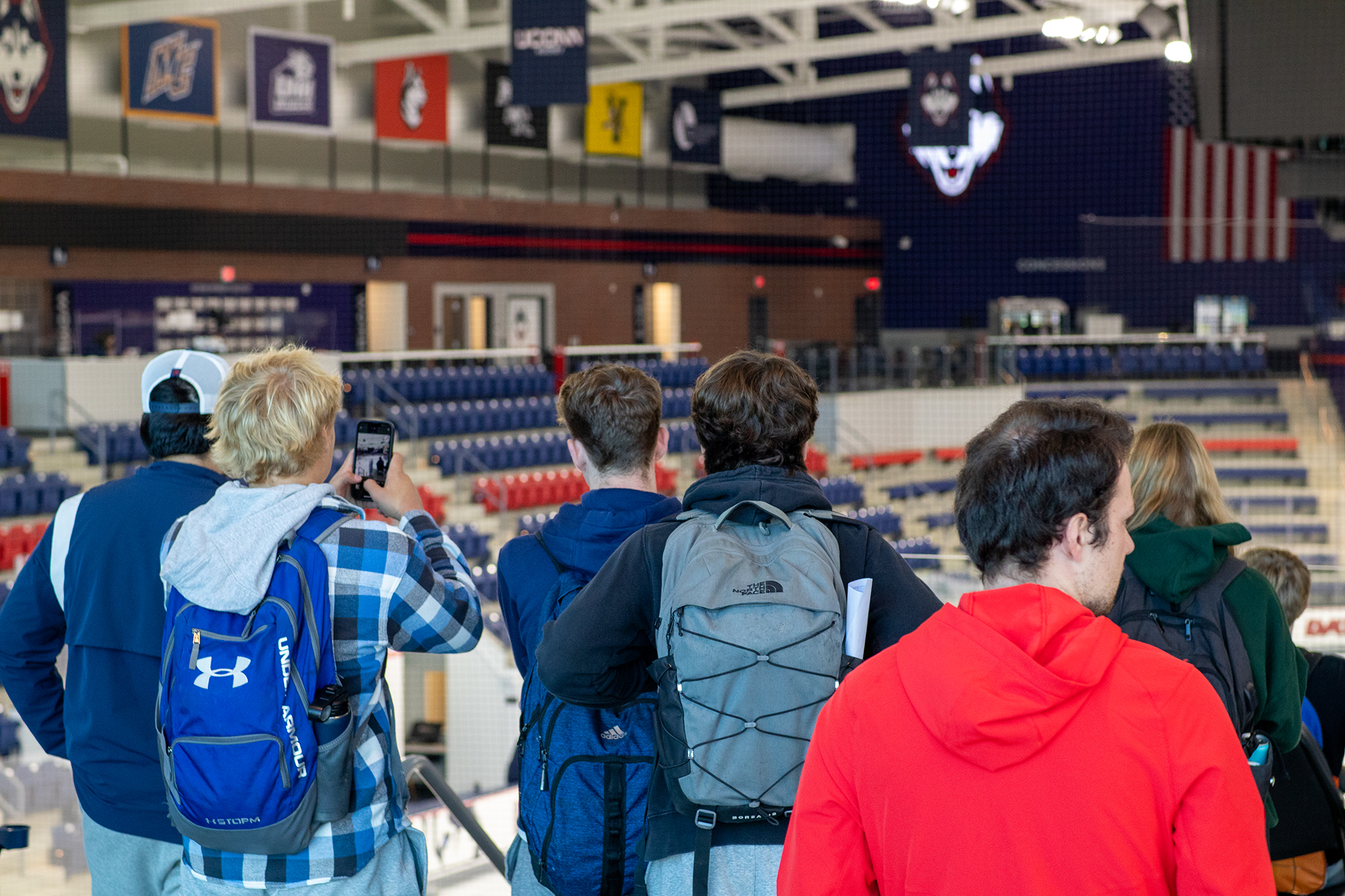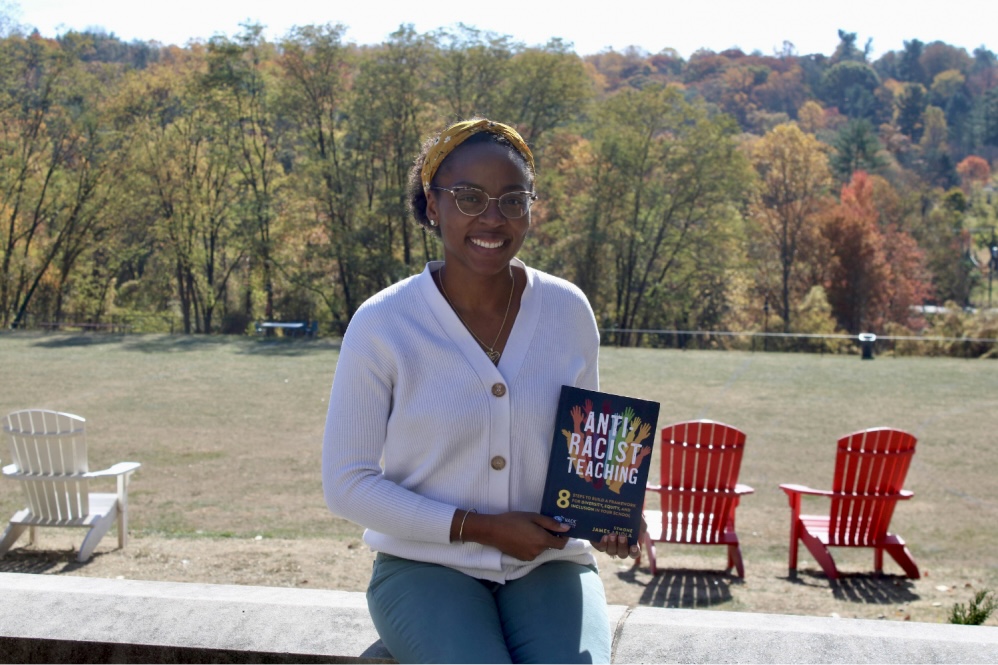Over the fall semester, UConn has administered or tracked more than 42,000 COVID-19 individual and surveillance tests among its student body, helping it successfully complete the semester’s in-person portion when many other schools had to send students home early.
For the spring semester, UConn will accelerate its work to include about 75,000 tests, expanding its testing strategy in a way that measures the health of the entire on-campus student population every day through wastewater monitoring, pooled surveillance, and individual testing.
UConn is one of few institutions nationwide using all three testing approaches combined, which hedges against potential shortages of individual tests and provides a more comprehensive measure of campus health than otherwise possible. Now, other institutions are starting to notice and hoping to emulate its work.
“We’ve been contacted by a few universities now to help them implement this strategy for their campuses, and we’re hoping to share the approach as widely as we possibly can,” said Rachel O’Neill, director of the UConn Institute for System Genomics during a Wednesday, Dec. 9 meeting of the UConn Board of Trustees’ Academic Affairs Committee.
O’Neill was joined by Suzanne Onorato, executive director of UConn Student Health and Wellness (SHaW), to present information on behalf of the testing strategy team.
Other universities are not the only ones noticing the comprehensive approach: “More than anything, I’ve heard from many parents that knowing this is happening has given them a sense of calm about sending their child to a university in the middle of a pandemic,” O’Neill said, noting that UConn also is guiding Connecticut municipalities who want to use wastewater testing.
In addition to expanding its current testing practices in spring semester, UConn will also soon start tracking the presence of the flu virus in its wastewater, and will conduct sequencing of COVID-19 samples it finds to determine if more than one strain is present on campus.
“The overwhelming reaction is wow, wow, and wow,” Jeanine Gouin, chair of the trustees’ academic affairs committee, said Wednesday in reaction to the presentation. “This team and UConn has showed such incredible innovation, leadership, and collaboration with the rigor with which it has approached this. We are clearly a leader.”
Many other institutions were forced to prematurely change from in-person courses and on-campus residency to fully remote operations this fall due to pandemic conditions, particularly since many college-age students nationwide have been asymptomatic and have unwittingly spread the virus to others.
UConn had already planned to finish its final two weeks after the Thanksgiving break with fully remote coursework, but even with its robust testing practices, no one could guarantee that UConn would reach that finish line without interruption.
“I think we all had our doubts at times, but the work that can be done on this campus with the resources we have is really amazing,” UConn Board of Trustees Chairman Dan Toscano said after the presentation.
Like all universities and other institutions, UConn had to build its testing strategy from the ground up as the pandemic disrupted regular operations last spring. But because it already had strong research practices and collaborations in place, UConn was able to quickly pivot to combine individual student testing with scientifically sophisticated testing of its campus wastewater and pooled samples.
UConn’s pandemic response spans numerous departments and academic disciplines, covering ways in which the University has adjusted housing and feeding students, maintaining facilities, scheduling classes and lab access, and many other duties.
The team that worked on surveillance testing plans went into the work with plans for a comprehensive approach, Onorato said: identify the virus quickly, get timely test results, and act rapidly to intervene and contain it.
Unlike some other campuses in larger communities, UConn collects and treats its own wastewater, which provided a perfect testing opportunity since the presence of the virus in feces can give a seven-day head start to anticipate when a spike might occur. With that knowledge, UConn then conducts pooled testing of large groups, then follows up with individual testing.
“The key to our approach is a very diversified strategy that allows us to pivot as supplies and the environment becomes challenging,” Onorato said.
Researchers collected and tested wastewater throughout the fall semester from 16 pumps around the Storrs campus, including the Wastewater Treatment Plant and select lift stations and manholes. When a positive result was found, they were able to narrow down to residence hall complexes and other areas on campus where the wastewater originated and could narrow their focus.
Then, large numbers of students in those halls participated in either individual testing or pooled testing in which they provided saliva samples in tubes, and each batch was tested – an approach far more speedy and cost-effective than widespread individual testing.
When a pooled sample batch tested negative, health officials could move on to the next; if it tested positive, they would drill down to smaller populations within those halls or facilities administering individual tests to pinpoint the source and intervene.
In addition to being efficient, it also offered a huge cost savings: Pooled tests cost the University about $4 per student sample, while individual clinical tests can range from about $50 to $140 each, O’Neill said. It also helped to pinpoint students who were carrying the virus but either were asymptomatic, or had very mild symptoms they had mistaken for something else.
UConn students took a combined total of more than 42,000 tests during the fall semester, starting with August re-entry testing and continuing through the following months as part of random surveillance or targeted tests for students who were symptomatic or in close contact with suspected cases. About 2,700 of those were pooled samples and an additional 650 wastewater samples were also taken.
While increasing its reach to about 75,000 student tests for the spring semester, UConn will also implement new measures for wastewater screening to obtain measurements close to the location’s source – critical for tracing back to where the infected person or people might live – rather than taking samples primarily from pumps, as is the case now.
The University also will offer updates on the testing on a public dashboard so parents, community members, and others can check those indicators of campus health whenever they wish. UConn has also offered its wastewater testing research services to the state to help municipalities who want to try that approach in their communities. A few already have started to use it.
Other critical pieces of the campus testing strategy provided by the SHaW clinical staff include checking symptomatic students with rapid-result testing, conducting timely and comprehensive contact tracing, enacting quarantine and isolation strategies, and administering weekly random individual surveillance testing for 10% or more of the student population.
Onorato said the tireless work of the dedicated SHaW staff in administering the tests greatly contributed to the success of the testing strategy. Eleanor Daugherty, UConn’s associate vice president for student affairs and dean of students, added that the tiered approach – wastewater surveillance, pooled testing, and individual PCR tests – has been teamed with strategies for behavioral change, and has led to UConn’s success despite the fears and uncertainty the pandemic has created.
“This is exactly what research universities do,” Daugherty said. “We welcome complex problems, assemble some of the world’s greatest minds, and then innovate in ways that contribute to the public good. As the state’s public flagship, UConn is eager to do its part to serve students and the state during what’s clearly one of the greatest public health challenges of our time.”



